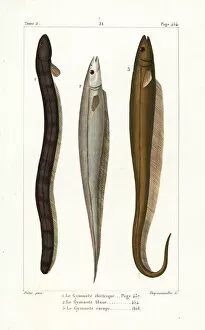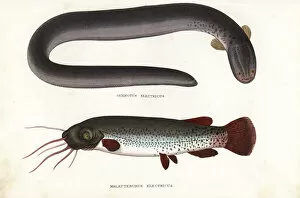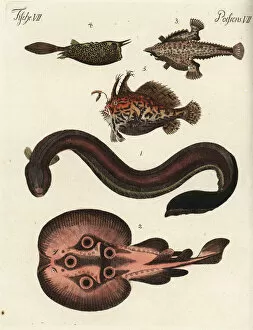Electrophorus Collection
The electrophorus, also known as the electric eel, is a fascinating creature that possesses the ability to generate electricity
All Professionally Made to Order for Quick Shipping
The electrophorus, also known as the electric eel, is a fascinating creature that possesses the ability to generate electricity. It belongs to a group of fish called gymnotiformes, which includes other electrifying species such as the pearlfish and banded knifefish. One of the most well-known members of this group is the electric eel, capable of producing powerful electrical shocks. Similarly, electric catfish also possess this shocking ability. These remarkable creatures have evolved specialized organs called electrocytes that allow them to generate and discharge electricity for various purposes. In addition to these fish, other species like the Asian swamp eel and banded knifefish are also able to produce electrical currents. Their unique adaptations enable them to navigate their surroundings in dark or murky waters by using weak electrical fields. The concept of harnessing electricity has fascinated scientists for centuries. In fact, it was Alessandro Volta, an Italian physicist from 1745-1827 who made significant contributions in understanding electricity. His inventions paved the way for modern electrical equipment. During his time, Volta studied various animals capable of generating electricity including the Electrophorus electricus or electric eel. He conducted experiments with these creatures and developed devices that could store and release electrical charges. In one image depicting Volta's workbench, two of his inventions can be seen alongside him - showcasing his dedication towards advancing our knowledge about electricity. This demonstrates how early pioneers like Volta laid down foundations for future developments in electrical apparatus. Throughout history, there have been numerous advancements in electromagnetic equipment during the 19th century. Various devices were created utilizing principles discovered through studying organisms like torpedo rays (electric rays), batfishes, cowfishes, and sargassum fishes – all possessing some form of electrifying capability. Electricity has come a long way since its discovery back in c1891 when it was still a relatively new concept.
















